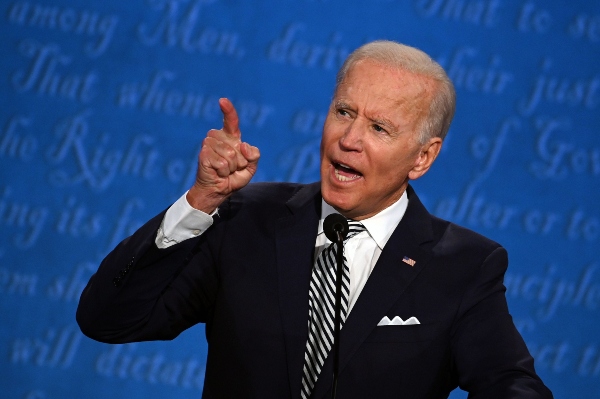Perspective: What Lifting US Sanctions Means for the Nord Stream 2 Pipeline
The Conversation via Reuters Connect
On May 19, Secretary of State Anthony Blinken announced that the United States was waiving sanctions on the Nord Stream 2 pipeline project.

The first Nord Stream pipeline, completed in 2011, links Vyborg in Russia and Greifswald in Germany via the Baltic Sea. Nord Stream 2 will link Ust-Luga in Russia to Greifswald in Germany. Since 2017, Washington has imposed a series of sanctions on firms and individuals involved in the construction with the aim of blocking it and stopping it permanently.
The Biden administration admits, however, that the US sanctions are currently unlikely to succeed, as the project is almost complete and his government wants to improve relations with Germany.
Washington opposes Nord Stream 2 because the pipeline will increase Europe’s dependence on Russian gas exports, and because these exports to Europe undermine the effectiveness of the US sanctions that have been in place against the country since 2014 due to the conflict in Ukraine.
The Trump administration also had its economic interests in mind when imposing sanctions – by reducing access to Russian gas, it hoped to increase its own exports of liquefied natural gas (LNG) to the European continent.
In 2017, US Congress adopted the Countering America’s Adversaries Through Sanctions Act (CAATSA) and the Senate passed the Countering Russian Influence in Europe and Eurasia Act, both designed to block Nord Stream 2. But when the European Commission expressed its readiness to adopt counter-sanctions if the White House adopted coercive measures, discussions surrounding potential sanctions were temporarily suspended.
In November 2019, however, the US announced that the US National Defense Authorization Act would include sanctions targeting companies and individuals involved in the construction of the pipeline. Fearing these sanctions, the Swiss company Allseas and the Italian company Saipem suspended their collaboration with Gazprom before the construction of Nord Stream 2 was completed.
There were several problems with US sanctions against Nord Stream, mainly because of Section 232 of CAATSA, which allows secondary sanctions to be imposed on people and entities outside the US.
As a foreign policy tool, sanctions normally serve to influence the behaviour of sanctioned states, according to the preferences of the sanctioning state. However, secondary sanctions force foreign companies and firms to comply with the US international agenda, even if it runs counter to the interests of their own state.
Secondary sanctions don’t distinguish between allies and foes, and can target any company doing business with a partner considered hostile to the US. Washington argues that secondary sanctions do not impose any penalties on other states, but their purpose is to prevent foreign firms from accessing the US market if the US deems that these firms are pursuing activities that run counter to its interests.
The US has successfully used secondary sanctions to discourage many European companies from investing in Iran since 2017. Fearing it would be denied access to the US market, the French energy company Total withdrew from a US$1 billion partnership with Iran in 2018.
The United States allows itself to adopt such policies because of its leading role world economy and the notorious importance of its market for the European continent. In the case of Nord Stream 2, the European Union has publicly and vehemently opposed the measures and questioned their legality.
Some European countries supported Washington’s hard line on Nord Stream 2. Ukraine undoubtedly had the greatest interest in supporting the US in its attempts to block the pipeline. A significant proportion of Russian gas destined for the European market currently transits through Ukraine. Revenues generated from transit fees paid by Russia and the EU accounted for 3% of Ukraine’s total GDP in 2017. Nord Stream 2, connecting Russia directly to Germany, will allow Russia and the EU to save these transit fees because it bypasses Ukraine.
Poland is equally opposed to the project. Poland also benefits from transit costs due to the pipelines on its territory, although to a much lesser extent than Ukraine. But Warsaw would like to become a hub for US liquefied natural gas, so the Polish government has a strong interest in supporting US measures and potentially liquefied gas exports to Europe. Finally, Poland fears that Nord Stream 2 will increase Russian influence in Europe.
As the first Nord Stream project was launched in 2006, Polish Defence Minister Radoslaw Sikorski compared the pipeline to the Ribbentrop-Molotov Pact of 1939, an agreement of non-aggression between Nazi Germany and the Soviet Union that led to the division of Poland. Since 2006, other voices have spoken out against the Nord Stream 2 project, including Estonian Foreign Minister Sven Mikser and Lithuanian Prime Minister Saulius Skvernelis.
Having tried to block the project since 2017, the United States ultimately preferred to lift sanctions on 19 May. But Biden says he remains opposed to the pipeline. And the US continues to apply secondary sanctions elsewhere in the world, most notably in Iran. In doing so, Washington is essentially forcing European businesses to follow its own foreign policy or risk being locked out of the US market.
Related News
Related News

- Keystone Oil Pipeline Resumes Operations After Temporary Shutdown
- Biden Administration Buys Oil for Emergency Reserve Above Target Price
- Freeport LNG Plant Runs Near Zero Consumption for Fifth Day
- Enbridge to Invest $500 Million in Pipeline Assets, Including Expansion of 850-Mile Gray Oak Pipeline
- Mexico Seizes Air Liquide's Hydrogen Plant at Pemex Refinery
- Evacuation Technologies to Reduce Methane Releases During Pigging
- Editor’s Notebook: Nord Stream’s $20 Billion Question
- Enbridge Receives Approval to Begin Service on Louisiana Venice Gas Pipeline Project
- Mexico Seizes Air Liquide's Hydrogen Plant at Pemex Refinery
- Russian LNG Unfazed By U.S. Sanctions




Comments